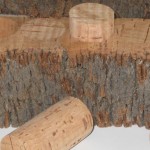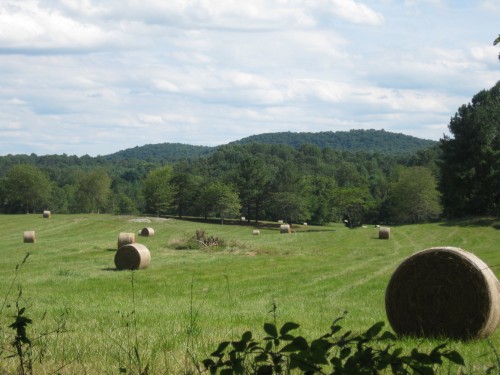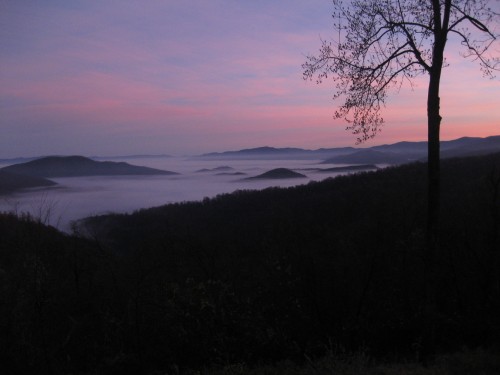Archive for November, 2009
Take a guess. How many air cells in one wine cork? A thousand? Ten Thousand? A million?
Let’s just round out the number at 800 million.
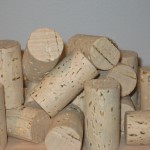 Indeed, 800 million, fourteen-sided air cells are contained in each cork used to seal a wine bottle. And that’s only the beginning of the marvelous attributes of a closure that has been in use for over three hundred years.
Indeed, 800 million, fourteen-sided air cells are contained in each cork used to seal a wine bottle. And that’s only the beginning of the marvelous attributes of a closure that has been in use for over three hundred years.
The first person to observe air cells in a cork was Robert Hooke, the English inventor of the microscope. Around 1662, taking a thin slice of cork, he slipped it under the lens of his new 50x magnification instrument. “I could exceeding plainly perceive it to be all perforated and porous, much like a honeycomb,” he later recorded. He was so struck by the design he called the tiny structures “cells” because they reminded him of the small monastery rooms that monks slept in. Science later adopted the term and to this day it is the conventional description of the smallest structural and functional unit of an organism.
While cork has been used for various purposes for centuries, its serious application as a wine bottle stopper emerged in the early 1700s. It was a technology so inventive and effective it is still the primary method of protecting wine from the effects of oxidation.
One of the key attributes of cork is its compressibility. It reacts like a sponge when placed under pressure, springing back to 90 percent of its normal size within a day. One can easily observe this characteristic by taking a cork that has been removed from a bottle and setting it aside for a few days, and then trying to reinsert it back into the vessel. It simply will not fit.
When punched cut into a wine cork and inserted in a bottle, it instantly expands and grips the sides of the glass in an almost—but not quite—airtight seal. The discovery of this unique trait allowed wine to age for more than a year, the single most important advancement in the history of wine production.
Cork is produced from the bark of the cork oak tree, Quercus Suber. Eighty percent of the world’s cork is produced in Spain and Portugal, with remaining forests located in Italy and North Africa.
Over eons the tree has evolved two sets of bark, one living and one dead. It is the outer dead bark that is harvested and used for commercial purposes. This unique double bark trait is believed to be evolutionally in origin. The tree thrives in sandy soil and a climate with little rainfall. Periodic forest fires forced the tree to develop a protective outer bark that can be damaged—or stripped off—without killing the tree. Once again, nature displays its cleverness by creating a useful survival mechanism.
The harvesting of cork follows a strict law enforced pattern. For the first twenty-five years, the trees cannot be touched at all. When the first bark harvest occurs, the product is low grade and unusable for wine corks. Another nine years must pass before the second harvest takes place. Yet again, the quality of the bark is not high enough for use as a closure. It’s only at the third harvest that the stripped bark can produce high quality corks. Thus, a tree will be approaching fifty years of age before its product becomes commercially viable for the wine industry.
But being patient has its dividends. The cork oak tree has a life expectancy of 150 to 200 years, generating up to 17 harvests. An impressive example of the production capability of these trees is the Whistler Tree in Portugal. The tree derives its name from the countless songbirds populating its branches. It has been producing cork every nine years since 1820 and will be harvested again in 2010. With its next bark stripping, this ancient beauty will have produced over one million corks.
Cork bark is hand harvested by skilled workers. The bark must be cut so as to not injure the under layer of living bark. Workers use four-foot long, fan-like axes to cut and strip the bark in sheets several yards long and a few yards wide. It under goes sorting by quality and air seasoning for six months. It is then boiled, sliced, punched and sorted by grade. Finally, the corks are polished, a thin film of paraffin applied and bagged with sulfur dioxide gas to protect them from spoilage prior to the bottling process.
Because of a growing problem in the 1980s with “cork taint”—a fungus that can contaminate wine with a musty aroma and mute its flavors—the leading manufacturers are increasingly using additional proprietary treatments to eliminate such contamination. The rise of this plight is what precipitated the creation of the screw cap phenomenon worldwide. Cork producers are now claiming the problem is under control.
Just as pork producers claim every part of a hog is used except its squeal, so it is with cork. Any remaining cork from the production process—called “blocker waste”— is granulated and used in a wide variety of products; including gaskets, tiles, bulletin boards, fishing rod handles and decorative items. Cork has even been used in the nose of the NASA space shuttle.
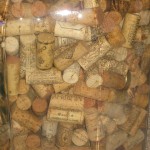 For many wine lovers, the romance of enjoying wine is closely linked to the use of a cork to seal the bottle. The scene of a waiter approaching a dining table, presenting the wine and then quickly snapping open a screw cap seems somehow a bit too modern for their taste. It’s not often one encounters a technology in use today that was first introduced over 300 years ago. But perhaps within the next decade, the future—or demise—of the natural cork closure will be resolved by the power of the marketplace.
For many wine lovers, the romance of enjoying wine is closely linked to the use of a cork to seal the bottle. The scene of a waiter approaching a dining table, presenting the wine and then quickly snapping open a screw cap seems somehow a bit too modern for their taste. It’s not often one encounters a technology in use today that was first introduced over 300 years ago. But perhaps within the next decade, the future—or demise—of the natural cork closure will be resolved by the power of the marketplace.
Nonetheless, there are legions of wine lovers who do not want to toss their beloved wine openers away. Their fervent hope is the next generation of enophiles will not be buying corkscrews in antique shops.
May the cork live long and prosper.
Published in the 2009 Winter edition of the Virginia Wine Gazette.
GLEN MANOR VINEYARDS
2007
Hodder Hill
Virginia Red Wine
$28
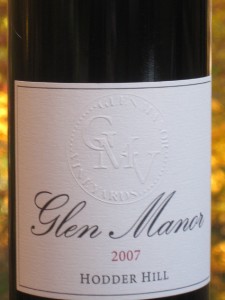 Owner Jeff White calls himself a vigneron, French for vinegrower. It’s a title that emphasizes the growing of high quality fruit with minimalist handling in the cellar. His ’07 Hodder Hill is a Bordeaux-styled blend of four reds. From its deep garnet hues to aromas and palate of black cherry, coffee and mint, this wine reflects the care taken in tending the vines. Pair with slow-roasted beef rib roast with dry mustard marinade and twice-baked potato. Drink now through 2012.
Owner Jeff White calls himself a vigneron, French for vinegrower. It’s a title that emphasizes the growing of high quality fruit with minimalist handling in the cellar. His ’07 Hodder Hill is a Bordeaux-styled blend of four reds. From its deep garnet hues to aromas and palate of black cherry, coffee and mint, this wine reflects the care taken in tending the vines. Pair with slow-roasted beef rib roast with dry mustard marinade and twice-baked potato. Drink now through 2012.
Glen Manor Vineyards is located six miles south of Front Royal at 2244 Browntown Road. The Vineyard’s property lies at the base of the Shenandoah National Park and offers visitors dramatic views of open farmland, vineyards and forest that arc up to Skyline Drive. The tasting room is opened April through November, Wednesday to Saturday, 11 AM till 5 PM, and Sunday Noon to 5 PM. December through March, Saturday & Sunday hours only. (540) 635-6324. www.glenmanorvineyards.com.
 Displaying flavors of clementine and candied grapefruit peel, with touches of dried apricot and pine needle. Hints of honey and smoke weave through the seamless texture and resonate on the long finish.
Displaying flavors of clementine and candied grapefruit peel, with touches of dried apricot and pine needle. Hints of honey and smoke weave through the seamless texture and resonate on the long finish.
All that in a sip of wine? Come on, get serious.
One can be forgiven after reading many of today’s wine descriptions, if a giggle is followed by a low muttered, “Yeah, right”. It’s difficult to believe that anyone could actually taste the exotic things they purport to write about. It all seems a bit too froo-froo.
Most of us do not focus on the subtle flavors in food and drink. Our descriptors fall more along the lines of…juicy, stale, spicey, dry, or hopefully, delicious. The art of tasting—and yes, it’s an art—is largely a learned skill. But, like world-class athletes, there are world-class tasters that are endowed with gifts most of us do not possess. The pros learn the game just like us amateurs. But as their skill sets deepen, they leave the rest of wondering, “How do they do that?”
There are four basic tastes we all perceive on the palate: sweet, salty, bitter and sour. More recently, a fifth taste component has been identified called “umami”, a Japanese word meaning meaty or savory. Overall, our taste buds provide us little information unless combined with our sense of smell, which can distinguish a startling array of aromas. This occurs when food or drink is volatized in the mouth and the “odorants” drift over our olfactory bulb, located at the top of the nose.
 A sip of Cabernet might start out as a bit sweet and bitter and then blossom into black cherry and smoke as it passes over our olfactory epithelium. From there it sends messages to our brain to confirm the aroma as specific flavors. Taste and smell work together to create our perception of flavor.
A sip of Cabernet might start out as a bit sweet and bitter and then blossom into black cherry and smoke as it passes over our olfactory epithelium. From there it sends messages to our brain to confirm the aroma as specific flavors. Taste and smell work together to create our perception of flavor.
It’s here the professional sommelier parts company with the weekend wine warrior. Science has confirmed that there are three categories of tasting ability: non-taster, taster and supertaster. An individual can actually be identified by category using a scientific method involving 6-propylthiouracil—or PROP—a drug used to treat thyroid conditions. The test involves applying a strip of paper soaked in PROP on the tongue and recording the taster’s reaction. A quarter of a given population tastes nothing at all, and are classified as non-tasters. Fifty percent observe a bitter taste, and are categorized as tasters. The final twenty-five percent react with an intense bitterness on the palate, these are the supertasters.
So while our palates convey only the most basic of tastes, it’s the density of taste buds on the tongue, combined with individual aroma sensitivity that produces super tasters.
 Unfortunately, the PROP test is not available to the general public, since it’s a prescription drug. But, there is a simple method that can give you a general idea of what category you fall into. Simply place a drop of blue food dye on a paper towel and gently rub it across the front of your tongue to create a pale hue. Then, using a magnifying glass, look into a mirror and count the number of pink dots in a circular area about a half-inch in diameter. The dots are fungiform papillae that house taste buds and will not take up the blue dye. If you have fewer than 15 dots, you are likely a non-taster; fifteen to thirty-five, a taster; and more than thirty-five a supertaster.
Unfortunately, the PROP test is not available to the general public, since it’s a prescription drug. But, there is a simple method that can give you a general idea of what category you fall into. Simply place a drop of blue food dye on a paper towel and gently rub it across the front of your tongue to create a pale hue. Then, using a magnifying glass, look into a mirror and count the number of pink dots in a circular area about a half-inch in diameter. The dots are fungiform papillae that house taste buds and will not take up the blue dye. If you have fewer than 15 dots, you are likely a non-taster; fifteen to thirty-five, a taster; and more than thirty-five a supertaster.
One of the most notable examples of a supertaster is the world renown wine critic, Robert M. Parker, Jr., known as The Emperor of Wine. So acute are his senses he has repeatedly demonstrated the ability to identify the varietal, producer and vintage of a wine tasted blind, and often one fifteen years old or older. His nose is insured for over a million dollars.
Beyond the innate abilities of a supertaster to identify wine flavors, two additional attributes come in to play: repetition and memory. Professional wine tasters take their natural gifts to a higher level by constantly tasting new and different wines, and by instinctively memorizing the aromas and flavors they encounter. It’s here where the pros leave a vast majority of average tasters in the dust. By committing to memory an array of flavors, a sommelier can accurately identify the tastes in a wine with just a few sips. It’s analogous to a computer searching its hard drive for data. Whirrrrr…compute…data dump, equals flavor descriptors.
 So how might the average person increase their ability to smell and taste wine with some degree of accuracy? First, don’t evaluate just wine, test taste a variety of food and drink. If you have just sliced a lemon for your iced ice tea, take a moment to deeply inhale the lemony aromas. Then squeeze a few drops of the juice on your tongue. Next, sip the unsweetened tea and feel the puckery tannin impact.
So how might the average person increase their ability to smell and taste wine with some degree of accuracy? First, don’t evaluate just wine, test taste a variety of food and drink. If you have just sliced a lemon for your iced ice tea, take a moment to deeply inhale the lemony aromas. Then squeeze a few drops of the juice on your tongue. Next, sip the unsweetened tea and feel the puckery tannin impact.
Repeat this process several times a week with a variety of food and drink. Try to imagine what the smell and taste is going to be and then confirm or correct your initial perception with an actual sniff and taste. Slowly you will begin to build a repertoire of impressions that will be useful in wine tasting. This should all be done with a sense of fun and when you are in the mood. Sniffing everything that is about to go into your mouth will only earn you odd stares from your friends and family.
Next, remember there are two types of wine enjoyment: tasting and drinking. The majority of wine lovers simply drink wine. Nothing to criticize here. But, by segmenting each wine experience into two phases your can improve your perception skills. A useful exercise is to first read the winery’s tasting notes, or the back label description. Then, pour just an ounce in your glass and see if you can conjure up the same or similar flavors as the winemaker perceived. Each bottle of wine you open now becomes a mini-tasting class lasting just a minute or two. After observing the flavor profile, relax and simply start drinking the wine.
A valued lesson in life is that over time we come to recognize many of our our dreams and goals must be channeled into other areas, as reality clarifies youthful expectations. And so it is for the wine lover. Most of us will not achieve the ability to identify wines tasted blind by varietal, producer or year with any consistency. But, so what? We can marvel at those who can and enjoy the process of learning more about wine simply one sip at a time.
Published in the 2009 Winter edition of the Virginia Wine Gazette.
It all started in a humble home in rural India over forty years ago.
And today, the fruit of a life’s work is literally growing in a meticulously cared for vineyard in the heart of Rappahannock County. The American dream lives.
 On Labor Day Weekend 2009, one of the newest wineries in the Old Dominion—Narmada Winery—opened its doors. Actually, it opened its lakeside cabana while the finishing touches were made to its tasting room. The state of the art 8,000 square foot wine cellar and tasting bar began serving the public in late November.
On Labor Day Weekend 2009, one of the newest wineries in the Old Dominion—Narmada Winery—opened its doors. Actually, it opened its lakeside cabana while the finishing touches were made to its tasting room. The state of the art 8,000 square foot wine cellar and tasting bar began serving the public in late November.
The fifty-one acre estate, with fifteen acres planted in hybrids and vitis vinifera grapes, is a dream in progress for Sudha and Pandit Patil. The professional couple will ultimately transition their current careers into full time wine proprietors somewhere down the road. But for now, juggling the demands of a new winery while leading active business lives precludes the idea of the traditional golden years retirement. There’s more to be accomplished.
The Patil’s story is emblematic of what a belief in education and a commitment to achievement can produce.
When Pandit was a seventeen-year-old graduate from high school, the Dean of the University of New Mexico was serendipitously traveling through his village in India. It was brought to the educator’s attention that an exceptionally bright lad was considering a career in engineering, at the behest of his father. An invitation was extended to visit with the boy’s family.
Pandit vividly recalls preparing for the important guest’s arrival. “We had no chairs in our home, only an adobe floor, and did not want this important man from America to sit on the hard surface. So we cast about the village and borrowed enough chairs to host the Dean in a more formal manner.” The visit went well and the young student was invited to apply for a scholarship at the university. Nine months later he received a National Science Foundation full scholarship in mechanical engineering.
Shortly after his educational success, his mother began writing him a standard letter with the theme, “Enough education. Come home.” Mom wanted her son to marry and begin his life. Pandit agreed to return to India. “Normally, the courting process in India involves evaluating several girls and deciding which one is best. In my case, the first young lady I began seeing was seventeen-year-old Sudha and I looked no further. It was the best decision of my life. She is a jewel,” he states lovingly.
Sudha soon shared her own dream with Pandit of becoming a dentist, and the young married couple returned to America. Within a few years, Sudha had graduated from Georgetown School of Dentistry and then the University of Maryland, earning a master’s degree and Certificate in Endodontics (root canal specialty). She opened a practice in McLean, Virginia and for twenty-four years served the dental needs of a clientele that included high-ranking government and private sector leaders. Today, her practice is in Culpeper to be closer to the winery and reduce her commute time.
This wine loving couple has two children with successful careers of their own. Their son, Dr. Susheel Patil, is an Associate Professor at Johns Hopkins School of Medicine and practices pulmonary medicine and critical care. He conducts research in sleep apnea. Their daughter, Mrs. Prema Patil Sharma, holds a degree in chemical engineering from Virginia Tech and is a program manager at a major biotech company.
The Patil’s purchased their property in 1999 and planted their vineyard and a cherry tree orchard a few years later. In addition to grape wine, plans are to produce a cherry dessert wine when the trees mature. The tasting room has an expansive, wraparound deck that overlooks the vineyard and a lake; wine and scenery are brought together to assure guests a relaxing environment. Their private residence sits on a gentle ridge at the back of the property with a sweeping view of the entire landscape.
Dick Manuel, an architectural design professional who resides in Rappahannock County, designed all of the buildings on the site. “Dick has done a great job creating a harmonious feel to the property, both structures and landscape,” states Pandit. The view from the deck attests to his skills.
Sudha and Pandit want to embrace the best of Virginia wine country while simultaneously linking it with their Indian heritage. Their marketing motto is: Experience India…Taste Virginia. The tasting room will feature a range of hors d’ oeuvres, including Indian cuisine, paired with their wines. For example, the off-dry, crisp and clean ’08 Mom Chardonel goes nicely with spice influenced Indian fare. A gift shop is also incorporated into the tasting room, featuring clothing and jewelry from India and other regions. A stage will accommodate a range of musical groups that will perform throughout the year. Along with Indian articles, they plan to carry items crafted by local talents.
Sudha, with a degree in chemistry, is a burgeoning winemaker herself; she made wines with their estate grapes during 2008 at Barrel Oak Winery with the help of Tom Payette, a wine consultant. Recently they hired Rob Cox, an experienced professional who worked at La Grange Winery before embracing the opportunity at Namada. His wines include Vidal Blanc, Chardonel, Chardonnay, Viognier, Cabernet Franc, Chamboucin, Cabernet Sauvignon and others. Current production is 1,700 cases annually with an ultimate goal of 5,000 cases. Sudha works closely with Rob in the production of their commercial bottlings.
Narmada Winery is a unique addition to the Virginia wine scene. The winery reflects what can be accomplished when talent and industry converge. Moreover, it showcases a heritage known for its beauty and artisan skills. America’s strength lies in its cultural diversity and now Virginia wine lovers have been given with their own Star of India…a wine sapphire extraordinaire.
Published in the 2009 Winter edition of The Virginia Wine Gazette.
 The scene is bare and forlorn. The wind whistles, the rain falls and here and there a lone leaf ripples on a vine. A harvested vineyard is lonelier than a car up on blocks.
The scene is bare and forlorn. The wind whistles, the rain falls and here and there a lone leaf ripples on a vine. A harvested vineyard is lonelier than a car up on blocks.
It seems its joy has taken refuge inside…inside tanks, barrels and carboys where the nascent wine is gurgling and bubbling its way into next year’s bottles. All matter on this planet simply evolves from one form to another. And in the case of grapes it’s a beautiful transition…fruit to wine.

Chardonnay Undergoing ML
The general consensus is that this year’s crop is sound and will produce quality wine. Rain, something a vintner doesn’t like to see during harvest, fell in various amounts during the middle of the red vendange. The white harvest was relatively dry and saw some exceptional fruit brought in. Overall, it was a solid crop.
At Hagarty Cellars, all my wines are either quietly sleeping or proceeding through ML. I had an opportunity to procure some California North Coast Cabernet Sauvignon this year. But, the pH and tartaric acid levels were somewhat unbalanced. Rather than put the wine through ML and lose some of its character, I have chosen to emphasize its fruit forward aspects and blocked the secondary ferm from occurring. This technique comes with a certain element of risk. One does not want a malolactic fermentation to occur in a finished bottle—unless of course you’re after cloudy and fizzy wine. Thus, I will extend age the Cab and treat it with sufficient levels of SO2 to avoid such a pitfall.
On the other hand, my Petit Verdot, almost black in color, is gently perking its way through ML, a process that can take several weeks, even months, to finish. Ditto my Cabernet Franc.
Many of my whites are finishing up ML and in a few weeks I will rack, or siphon, the wine off its lees, or dead yeast cells. Then, a protective shot of sulfur will be added and I’ll haul the six-gallon carboys up to my garage. There they will sleep in the chilly air for three months as the wine cold stabilizes. If I did not take such action, and bottled the wine in May, as soon as I stuck a finished bottle in the fridge it would begin to precipitate “wine crystals”, or tartrates. While not a flaw, most wine drinkers are not enamored with the unsightly but harmless crystal shards lying at the bottle of a bottle or glass.
The months ahead are a quiet time for a home winemaker. Other than an occasional racking of a carboy, it’s a period of maturing for the baby wines. Of course, the fun part is all those test sips I’m required to perform during the long winter months.
But hey, it’s all part of making wine.
